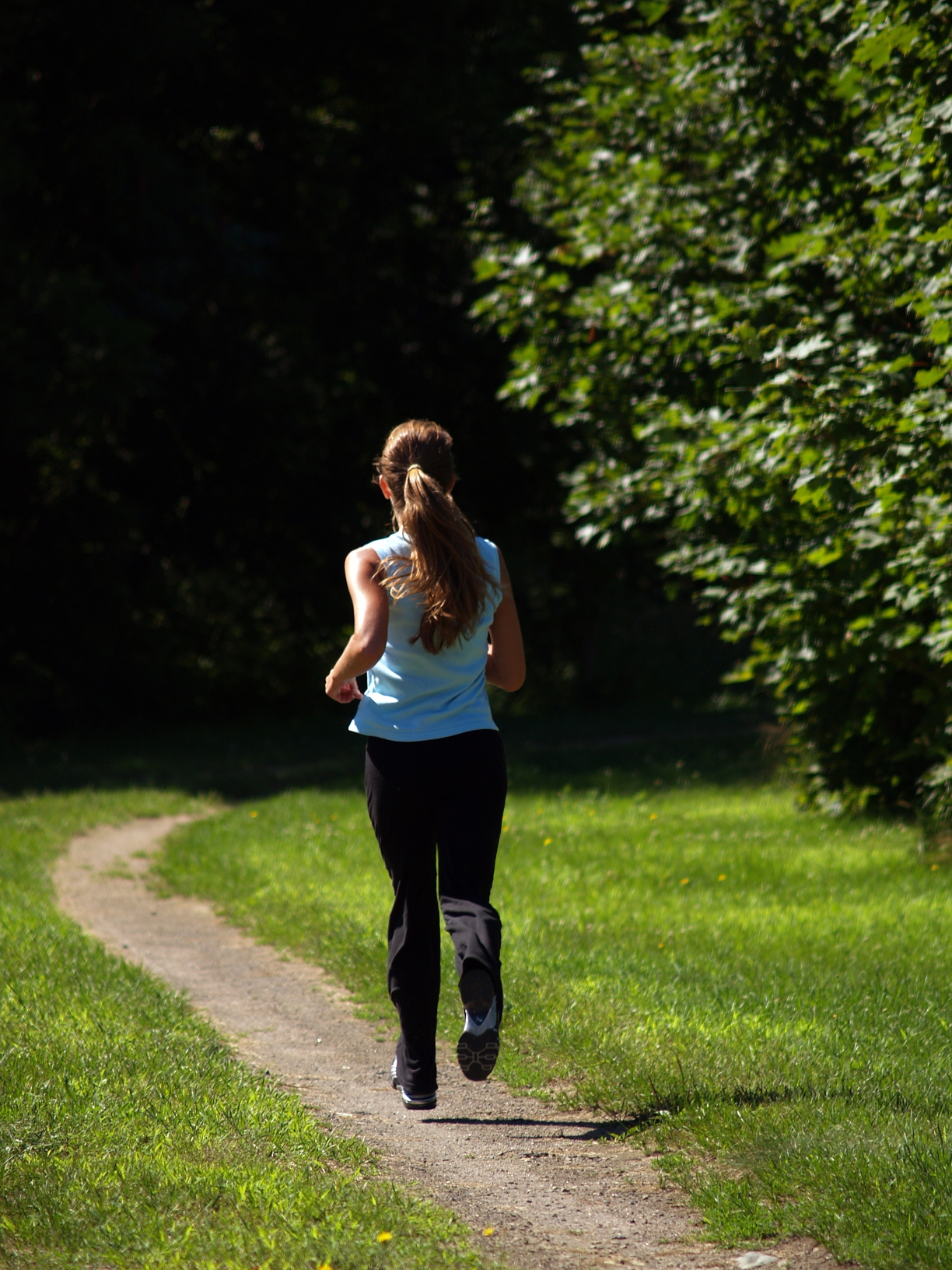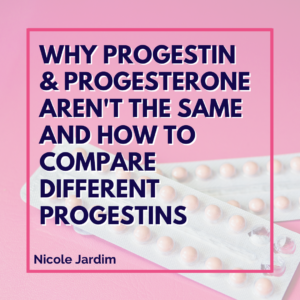A few years ago, an extremely well known and well respected strength and conditioning coach named Mike Boyle wrote a scathing article about why women shouldn’t be running. The running community, particularly female runners, went on to write passionate reviews about why running had saved them and how running is the most amazing form of exercise. Mike Boyle was bashed for being misogynistic and he eventually took down the article. The problem is, Mike was on to something, and we would be wise to listen to his advice.

I feel that it is my professional obligation to explain the facts. Please know that I write this from a place of love and concern and not because I am anti-feminine or a hater of runners. What is written here is based on my personal research and experience with clients. I hope that after reading this you will feel that you can make an empowered decision about your health. I always say that we should chose a form of exercise that is fun for us. I understand that many women run because they love it. There are some women who love running and thrive doing it and so, I do not want to discourage a good thing. However, for a majority of us, running can be problematic.
First, and probably the primary reason Mike Boyle got in trouble, was that he was a little snarky about female bodies. The fact is that we have wider hips than men. This isn’t misogynistic, this is an anatomical fact. Boyle pointed out that the most successful runners, which he defined as those that were proficient in speed, form, and mechanics, had narrow hips like men. You can google images of professional marathon runners and see what he meant. I can see how women may have found this offensive and also how it was taken out of context. After all, not all women are running to be professionals. Most runners are running to get fit or to reduce stress.
The fact is that women’s hips are wider than our knees. This line from hip to knee is known as the Q angle. Boyle presented the idea that this Q angle is responsible for an increase in injuries in women. However, a few studies have been done since to suggest that it may not be the Q angle so much as general deconditioning that promotes injuries in both men and women. Most likely you have heard of runners with “runners knee”, IT band syndrome, meniscus tears, cartilage being worn down, lower back pain, shin splints, and hip replacements. These are all very common running injuries for both men and women however, women are often at a higher risk for reasons that are not completely clarified at this time. If you do have wide hips, be cautious and be sure to have a specific program for conditioning to avoid potential problems. Running is generally tough on the joints and is thus, not a sustainable sport. For those women who routinely run and do not have injuries, it may simply be a matter of time before they show up.
But you say, “I could never give up running because it makes me feel awesome!” Running increases our feel good hormones like endorphins. This increase leads to what is known as the runners high; a state of euphoria felt by athletes. After taking a run you feel energized and raring to go. While your brain is feeling amazing after a run, your internal levels of cortisol, a stress hormone, are creeping up. The longer the run, the more likely this hormone will continue to increase. According to Chris Kresser, author and Integrative Medicine Practitioner, “Certain high-intensity exercise routines may push the body’s stress response too far, leading to a cascade of biochemical responses that can cause serious damage to one’s health in both the short and long term.”
Most likely you are already being exposed to huge amounts of cortisol due to your busy lifestyle and the pressure of keeping up with work and family life. This constant state of “fight or flight” can lead to chronic adrenal fatigue which has been associated with numerous health risks. Essentially, when your body is stressed it shuts down all other activities in order to focus attention on dealing with the stress. Kresser states, “Chronically high levels of cortisol can increase your risk for a variety of health issues, such as sleep disturbances, digestive issues, depression, weight gain, and memory impairment. Excess cortisol also encourages fat gain, particularly around the abdomen.” Additionally, as women, we have to be aware that the“fight or flight” response created by our adrenal glands reduces our progesterone levels. Progesterone is used up during the process of creating the stress hormones. This means we can be low in progesterone and according to Dr. Len Lopez, “[fusion_builder_container hundred_percent=”yes” overflow=”visible”][fusion_builder_row][fusion_builder_column type=”1_1″ background_position=”left top” background_color=”” border_size=”” border_color=”” border_style=”solid” spacing=”yes” background_image=”” background_repeat=”no-repeat” padding=”” margin_top=”0px” margin_bottom=”0px” class=”” id=”” animation_type=”” animation_speed=”0.3″ animation_direction=”left” hide_on_mobile=”no” center_content=”no” min_height=”none”][low progesterone] is one of the primary reasons some women are having a hard time with infertility and miscarriages; they don’t have enough progesterone available to conceive or maintain a pregnancy. “
Not only does cortisol promote weight gain and other dysfunction within the body but it can also decrease your bodies ability to lose weight. Since many people run as a form of weight management this cortisol increase is literally undoing that intention. The increased cortisol levels will limit your ability to loose weight no matter how many calories your heart rate monitor is measuring.
(I want to make a quick side note here about calorie counting. Many people run because they feel it is the best form of exercise for blasting calories. Calorie counting, as a concept, is ludicrous. It is inaccurate because all calories are not created equal; i.e. 100 calories of jelly beans verses 100 calories of almonds are received and processed differently by your beautifully designed body. Secondly, the calorie counters on machines are almost always inaccurate and heart monitors are not much better. Additionally, If you were to run an entire marathon, thats 26 miles, you would only burn off about one cheese burger and fries. You can run for 26 miles and not burn 3500 calories which means you would not burn one pound of fat! That is 26 miles! An average of 5 hours of continuous running! Take a second to wrap your brain around that! )
Also, running will almost always boost your appetite and increase your desire for carbohydrates. Your body will crave carbohydrates because it is an easy form of energy. The enormous amount of energy loss during running will trigger an increased desire to eat. You may be thinking, “what about my friend who is a super lean runner?” Well there are always exceptions and we process carbohydrates differently based our genetics. The rare woman who does get super lean from running, and extreme athletes, often have hormone issues and loss of menstrual period due to decreased estrogen and loss of body fat. Again, this can lead to fertility problems, low libido, and other gynecological issues. Treating exercise as the primary method of weight loss is dangerous. I often tell my clients that anyone can out-eat any type of exercise program that I create. We have been conditioned to think that exercise will lead to shedding pounds and that more is better. This is simply not true. Exercise can be an assister but food is the primary determiner of weight loss.
Sadly, the biggest benefit you gain out of running long distances is getting better at running for a long time. You will most likely not loose weight, you may end up injured, and in the long term you may have health concerns pop up such as difficultly conceiving and other cortisol related issues. But, there is a solution. I want you to exercise! So here are my top tips for what type of exercise to do based on the primary concerns I have heard from clients:
1.) You believe that you have to do 45 minutes of cardio. This concept is SO 1977, literally! Back in 1977, Jim Fixx, a marathon runner and author wrote The Complete Book of Running. Fixx popularized the concept of anaerobic verse aerobic exercise. Science is now pointing to the idea that physiologically, anaerobic conditioning will have aerobic benefits. This means that an anaerobic exercise like a sprint will increase your aerobic strength and conditioning. Additionally, anaerobic exercises are easier on the joints, promote healthy metabolism, and boost lean muscle growth. I’d like you to consider the concept that Tim Ferris calls the “minimum effective dose.” In order for exercise to be effective, less is often more productive. For example, 8 minutes of high intensity intervals such as Tabata training are more beneficial than slow and steady cardio according to Japanese scientist Izumi Tabata, who discovered intervals to be equally if not more effective at cardiovascular conditioning and increasing metabolic rate.
Click this link for more info on how to do Tabata training.
2) Running gives you a place to think and get away from it all. Try rowing. Rowing reduces pounding on the joints. However, like running, rowing has the same deep breathing pattern and is a full body exercise. Also, if you need a place to think, create some space for yourself to do a meditation. Apps such as Mindify and Buddhify have helped me to think more clearly, lower my stress level, and even come up with creative ideas.
3) You love the runners high. Try doing plyometric exercises like squat jumps, push ups, sprints, mountain climbers, lateral runs, kettle bell swings, box jumps, and lateral hops. If you don’t feel awesome after a workout like this, then you weren’t pushing hard enough. An intense plyometric session should never last more than 30 minutes and should be done no more than 4 times per week. Keep in mind that adequate recovery time is as important as the exercise type and time engaged. Be sure to get adequate sleep and days off from your exercise routine.
4) You love the cool factor of doing a marathon. People love a good marathon. There is so much fan fare around this sport that it is hard not to want to get involved. Consider doing a different type of measurable sport such as a Tough Mudder. And if you enjoy the community aspect of running, consider joining other fitness related communities. MeetUp.com is a great place to find like-minded fitness friends to workout with and do group challenges with.
I hope that this information served you. Please leave a comment in the comment section below with any questions or concerns about running and I will be happy to assist you.
 Allison Vernon Thompson is dedicated to exposing the naked truth about health and wellness. She is the creator of Our Naked Life, an online community dedicated to celebrating, motivating, and educating women on our path to vibrant energetic health. She works one-on-one with clients in Tribeca, New York. Allison holds a BFA in Dance Performance with an emphasis in Kinesiology. She is a board certified Health Coach, certified personal trainer, and Pilates mat instructor.
Allison Vernon Thompson is dedicated to exposing the naked truth about health and wellness. She is the creator of Our Naked Life, an online community dedicated to celebrating, motivating, and educating women on our path to vibrant energetic health. She works one-on-one with clients in Tribeca, New York. Allison holds a BFA in Dance Performance with an emphasis in Kinesiology. She is a board certified Health Coach, certified personal trainer, and Pilates mat instructor.




10 thoughts on “The Naked Truth About Running”
Please learn the correct usage for lose and loose. It makes the content less credible, even if the information may be helpful.
I feel that I am not built to run. I have very wide hips (developed after birthing my 2 children), I’m short, and i never get faster in spite of alk my efforts. Not to mention I hate running. My knees hurt all the time, my lower back, the whole 9 yards.
That being said, I’m in the Army and I don’t have a choice. Now, I always pass my p.t. test, I’m a 36 year old woman…but my leadership and all the young, thin, tall, svelt males think I should be able to keep up. They look down on me for falling out of every run…but I just can not keep up with them. It’s so demoralizing. How do I get faster without breaking myself?????
Wow, marvelous blog layout! How lengthy have you been running
a blog for? you make blogging glance easy. The full look of your
site is excellent, as well as the content material!
There are a lot of incredible questions on here, but it’s so much easier to get clear answers in our Know Your Flow Facebook group. Just paste the following link into your browser:http://tinyurl.com/pkflo6r
There are tons of women in there who’ve had similar experiences and it’s much more private. I also have a free Period Survival Guide for you here: http://tinyurl.com/nh7y55g
Emily, thank you so much for your thoughtful message and your encouragement! I’m inspired by how you have listened to your body. I would encourage you to try foam rolling to help with your knee and back pain. I have had great results personally and with many clients in healing knee and lower back pain with foam rolling. I love your yoga and interval combo. So great!!
Allison, huge kudos for having the courage to write this article. For a long time I have felt that running is a waste of time personally, and for most of my friends who do it. (I’ve also read Born to Run, which is pro-running but indicates research that running shoes are one of the main reasons for injuries). As a result I got into weight training, which I love, but after several years my back and knees were hurting (not enough stretching), and I stopped working out altogether. I’m now ramping back up with a combination of intervals and yoga, for weight management, toning, and cardio health. It’s inspiring to read such a bold article confirming what I’ve felt.
LaQuilia and Bridgit, I really appreciate hearing about your personal experiences with running. I am really encouraged to hear about how you both listened to your body’s signals and stopped running once you realized it wasn’t feeling good. Far too often I think we push through the pain. The “no pain, no gain” concept is, in my opinion, often taken too far. When we start to get serious chronic pain/injuries or fatigue that is difficult to recover from, its safe to say we are over training. Hopefully, we can all pass the word on this topic to our girlfriends and family. cheers!
Very interesting article. I used to be a big runner in my teens and early 20s. Frankly I got a lot of injuries even then. But now, in my late 30s, when I try to go back to running for its convenience and pleasure, it feels so unforgiving. I do find I can do some short sprints.
Yoga, barre, pilates and light weights are more my style now. Thanks!
LaQuilia, I completely agree with you. I used to run and jog and my joints were the first thing to go. I decided there was no point in suffering anymore either! 🙂
This article definitely confirmed my similar feelings on running. Jogging/Running were my main forms of exercise at the origin of my fitness journey this year. I love the ‘high’ and satisfaction of “getting my cardio” in. However, by the fall months, by joints were really suffering. I tried my best to get protein after workouts and began rest days as well. The hips/Q angle issue is very interesting- I will be doing further research. Overall, I personally experienced my body forcing me to reduce this activity. I really enjoyed this guest post, very enlightening!